#viral video from Manipur
Text
Manipur Viral Video का NCW ने लिया संज्ञान, Twitter को नोटिस जारी
New Delhi: राष्ट्रीय महिला आयोग (NCW) ने गुरुवार को मणिपुर के वायरल वीडियो पर स्वत: संज्ञान लिया, जिसमें दो महिलाओं को पुरुषों की भीड़ द्वारा नग्न परेड कराया जा रहा है और ट्विटर को नोटिस जारी किया।
एनसीडब्ल्यू ने ट्वीट किया, “एनसीडब्ल्यू मणिपुर घटना की निंदा करता है। डीजीपी मणिपुर को तुरंत उचित कार्रवाई करने के लिए कहा गया है।”
एनसीडब्ल्यू प्रमुख रेखा शर्मा ने कहा कि घटना में शामिल एक संदिग्ध…
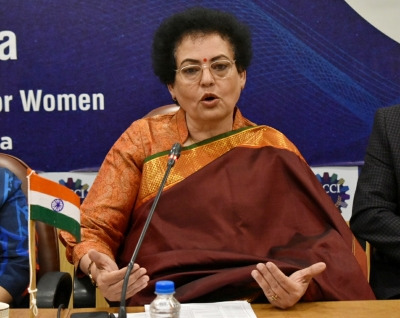
View On WordPress
0 notes
Text
im so tired man
#it took a video from may coming out and becoming viral on twt for the administration to even acknowledge the gravity of everything that's#happening in manipur#someone on twt said that they shut down the internet in manipur not to maintain peace/control the situation there but to maintain and#control national apathy and they're so right#and when MPs bring it up for discussion in rajya sabha the day's session itself is adjourned#despite it being barely two. maybe three hours. since the monsoon session began#and also what a horrific video it was#i can't even. fucking hell man.
2 notes
·
View notes
Note
Hey kiki can you please search Manipur viral video, and share this news with your followers.two girls need support from every corner of the world please help 🙏
hi friend… so i looked into this and it’s incredibly shocking, vile, and terrifying. from what ive gathered there is a civil war happening that has led to immense violence, including public sexual violence against women. im not well educated on credible places to donate or to send aid, but i did find this from a women’s organization based in manipur that is helping those who have been displaced due to the violence.
here is a video of them explaining what is happening and what their org is doing to help in more depth:
youtube
#anon#i know the whole sending love and well wishes doesn’t do anything#but if anyone on here is affected by this don’t hesitate to reach out#women and their bodies are not pawns#and the fact that im just hearing about this is gross on my part#but i will be donating and i encourage everyone who can to aswell#and yeah like i said#if anyone on here needs anything#or knows people who do as a result of this#don’t hesitate to reach out
21 notes
·
View notes
Text
Discover the Unprecedented Verdict: Supreme Court Unleashes Groundbreaking Online Trial for Manipur Violence in Assam
The Supreme Court has made a significant decision to transfer 17 cases of violence in Manipur, currently being investigated by the CBI, to Assam. These cases include the viral video of two women who were sexually assaulted and paraded naked. In order to facilitate the victims, the court has issued directives allowing them to give their statements from Manipur through video conference. Solicitor…
View On WordPress
0 notes
Text
It took a viral video for Indian Prime Minister Narendra Modi to finally break his silence on ongoing ethnic violence in the northeastern state of Manipur. The footage, which became public only last month, sparked outrage far beyond the state: Filmed on May 4, it shows a mob assaulting two women from the Kuki minority—stripped naked—before pushing them into an empty field. Reports citing the survivors’ families revealed the complicity of the state police. Ironically, the police station a few hundred yards from the site of the crime was awarded the “Best in the Country” title in 2020.
Violence between the Meitei ethnic majority and the Kukis has hounded Manipur since May, when a court order reserving some government jobs for Meiteis exacerbated tensions over land rights, poppy farming, and religious freedoms. Manipur Chief Minister N. Biren Singh has carved out a role for himself as the Meitei community’s de facto leader. More cases of sexual assault have come to light in the past two weeks, but Singh—a member of Modi’s Bharatiya Janata Party (BJP)—now denies that the women in the May 4 video were raped. His state government imposed an internet shutdown for weeks, hindering the spread of information.
The crisis has not subsided, and thousands of weapons stolen from police armories are still circulating among mobs. On Tuesday, India’s Supreme Court described the violence as “an absolute breakdown of law and order.” The presence of federal forces in Manipur hasn’t improved the situation: New Delhi’s strategy has instead divided the state, burning bridges between the Meiteis and Kukis. This apparent political ineptitude falls in line with the BJP’s Hindutva ideology, which identifies Hindus as India’s rightful inhabitants, justifying violence against religious minorities. In Manipur, the Meitei community sees itself as the state’s original inhabitants, replicating the use of violence against Kukis and others that it perceives as outsiders.
The use of state machinery to aid the majoritarian project in Manipur recalls the 2002 Gujarat riots targeting the state’s Muslim population, which occurred while Modi was chief minister. (An opposition politician has even invoked dark parallels to the Rwandan genocide, where the role of the state is well documented.) Manipur’s internet ban, now partially lifted, underlines institutional paranoia about controlling the narrative. Tensions have already spread into other Indian states as well as neighboring Myanmar, where the Kuki community shares ties with the Chin minority. The crisis raises serious questions about Modi’s governance model and his political ability to deal with India’s diversity and the tensions it raises.
In Modi’s statement about the viral video in Manipur, he invoked examples of sexual violence in opposition-led states, diminishing the specificity of the crime and seeking to deflect public outrage. His comments did not lead to any shift in national policy. And while sexual assault against women has captured attention, the scale of overall violence in Manipur is startling. More than 160 people are dead, and another 60,000 people are displaced. More than 4,500 weapons are missing from state armories, with officials estimating that almost all of them are with Meitei militias. More than half of these weapons are automatic—a stunning comparison with the situation in Indian-administered Kashmir, where New Delhi has fought a three-decade-old insurgency in which many militants are armed with pistols.
Manipur’s state police force is not incompetent or careless; its inaction amid the violence borders on complicity. A bulk of the weapons stolen in Manipur have not been returned to or recovered by security forces, and it is not for a lack of personnel in the state. In addition to the 29,000-strong state police, New Delhi has sent 124 federal companies—each with between 80 and 100 troops—to Manipur. Then there are 164 columns of similar strength from the Indian Army and the Assam Rifles, a paramilitary affiliate. For a state with a population of 3.2 million, this comes out to an average of nearly one security person for every 55 citizens.
In May, Modi’s government sent its army chief to Manipur and brought in a new police chief from another state to restore order, but both officials have failed to overcome the partisan state government. The state police forces are split vertically, with the new police chief asking cops to report to duty in areas where their ethnic group is in the majority. New Delhi also issued directions that cleave the state with a federally manned buffer zone between the Meitei-dominated valley and the Kuki-dominated hills. Rather than bringing the violence under control, this approach has cemented the divide between the ethnic groups. The Kukis now demand a new administrative structure separating them from the Meiteis, which is vehemently opposed by the majority community.
The administrative incompetence on the part of both the national government and the state government led by Singh reflects the majoritarian nationalism espoused by the BJP. The embrace of Hindutva in states led by the ruling party has led to the lynching of young Muslim men for the flimsy excuse of smuggling cows and to the creation of laws that seek to criminalize interfaith marriages. In Manipur, the same ideology is tailored at a subnational level: The majority Meiteis have found resonance between their indigenous Sanamahi faith and Hindutva, targeting the largely Christian Kukis. Although the fault lines of the conflict are not drawn explicitly around faith, there are religious undertones to the violence.
New Delhi’s failure to stop the violence in Manipur has not yet affected Modi on the international stage. In the wake of the Gujarat riots, which began after a fire in a train compartment killed 58 Hindu pilgrims traveling from Ayodhya, Modi described the ensuing attacks against Muslims as “a chain of action and reaction.” India’s Supreme Court at the time called Modi a “modern-day Nero,” and he was denied a visa to the United States on the grounds that he was responsible for violations of religious freedom. The ban was reversed only after he became prime minister in 2014. By contrast, in June, with violence escalating in Manipur, Modi chose to travel to Washington for an official state visit. French President Emmanuel Macron welcomed him to Paris in July.
All the while, he remained silent. In the three months since the violence began, Modi has not publicly chaired a meeting on Manipur nor issued an official statement for the victims, let alone traveled to the state. In a rare press conference for Modi following his meeting with U.S. President Joe Biden, the Indian leader responded to a question—only one was allowed—about the status of religious minorities in his country. Despite the question coming while churches were burning and women were being assaulted in Manipur, Modi blurted out meaningless paeans to Indian democracy. At the time, complaints to state police and federal authorities were still awaiting a response.
For New Delhi, hoping that the fires in Manipur will be doused on their own has not worked. India’s government was long able to pacify the state with support from friendly neighbors in Bangladesh and Myanmar. But as tensions spread beyond Manipur, it is at risk of losing those gains. India’s federalism is already under strain, driven by calls for “Hindi, Hindu, Hindustan,” the ominous idea of one language, one religion, and one nation defining India. States in the country’s south, where the BJP is relatively weak, have cited the decay of India’s federal structure to rally supporters, raising the possibility of some states demanding more autonomy—a demon thought to have been buried in the early years of India’s independence.
The situation in Manipur has also raised alarms about the capacity of the Indian state to clamp down on violence. Whether unable or unwilling to restore order in Manipur, the national government finds its credibility and authority frayed by the crisis. The state’s internet ban suggests a government that fears the free flow of information, using the suppression of violence as a pretext for broadly curtailing freedom of expression and depriving the citizens of their rights. No modern state can function in such digital darkness—and especially not as Modi boasts on the global stage that India’s digital public infrastructure is “highly secure, highly trusted, and highly efficient.”
In fact, the violence in Manipur is putting India’s desire to be recognized as a global power to the test. Apathy on the part of top leadership, targeting of minorities, and internet shutdowns are not the hallmarks of a country that hopes to be respected as an important player on the world stage—as much as Modi would like to avoid mentioning the issue. Furthermore, the violence in Manipur only draws attention to the fact that India has not held local legislative assembly elections in Muslim-majority Kashmir for more than a decade. The country christens itself as the “mother of democracy” and others hail it as the world’s largest democracy, but such hypocrisy overpowers any public relations campaign by New Delhi and its cheerleaders in foreign capitals.
India is no longer the world’s fastest-growing economy; Saudi Arabia is, followed by Vietnam and the Philippines. Unemployment is a serious concern, as is widening inequality and weak rural demand. Modi and the BJP head into national elections next year with an economic record that they cannot boast about. The Ladakh border crisis with China has stripped the prime minister of national security talking points. Amid the Manipur crisis, he cannot brag about his ability to make tough calls. If the BJP decides to double down on religious polarization ahead of the elections, as it has regularly done under Modi, it could render India’s minorities even more vulnerable.
India’s leaders once stressed that the country embodied the idea of unity in diversity, allowing it to manage social and ethnic differences without pandering to majoritarian impulses. The violence in Manipur serves as warning of just how far the BJP’s pursuit of such politics could drag India down.
1 note
·
View note
Text
Manipur: India's Supreme Court to hear plea by women in viral assault video
The women, who were sexually assaulted by a mob, have asked for their identities to be protected.
from BBC News – World https://ift.tt/Yrdjupz
via IFTTT
View On WordPress
0 notes
Text
The Manipur incident is a case of sexual assault and public humiliation
The Manipur incident is a case of sexual assault and public humiliation that took place on May 3, 2023 in Churachandpur district, Manipur, India. Two women from the Kuki-Zomi tribe were stripped naked, assaulted, and paraded by a mob. The incident was caught on video and went viral, sparking outrage across India.
Since then, there have been protests in Manipur and other parts of India…
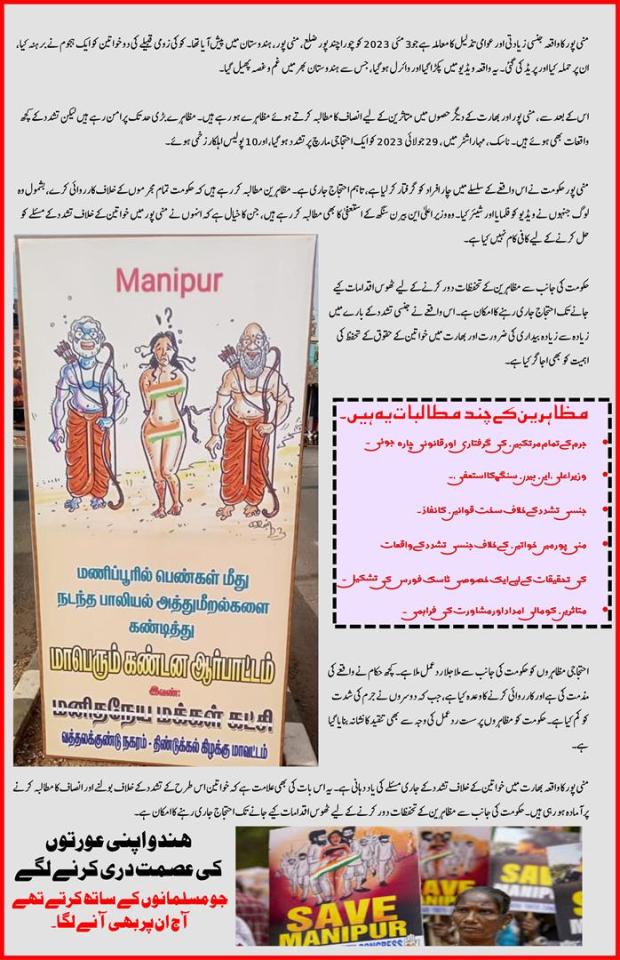
View On WordPress
0 notes
Text
On Manipur
The people who didn't mention Manipur for more than two months of violence are speaking now. But observe what they're saying. Who can stop the violence? Who's responsible for maintaining law and order? Manipur police of course is incompetent. If it was competent violence would not have continued for so long. And by now we know Manipur police was supporting majority community. What generally happens in such a case? President's rule is imposed. Why was it not? These are the questions whose answers will move us forward and eventually lead to peace. Basically accountability.
Instead we are indulging in whataboutery. Whataboutery has a purpose. This is not the case for it. There's a detailed and important episode on Whataboutery from John Oliver - please watch it. It is employed here to hide the powerful from accountability and to shield them from their responsibility. It is of course also coming from the expected quarters. Rest of you, don't get yourself sucked into it. Manipur violence is not comparable to violence in Bengal and Rajasthan. Even if we assume extent of violence is same (far far from truth that is), but even then, in Bengal central agencies are overlooking the incidents there, in Rajasthan perpetrators were immediately arrested. How's that comparable to Manipur where arrests took place after two months and not even because police took that long to investigate (this rape took place near a police station and in fact police handed over the women to mob). Arrests took place because after the internet ban was lifted, the video of violence went viral on twitter. It was picked by international media. That's why. Oh by the way, Indian media (The Print and Scroll.in) did report on these violences. It was all text. And who reads text these days? And that too text about a north eastern state!? Let's not kid ourselves. There are parts of India wherein our interests are only in the lands and not in the people that inhabit those lands. Let's just don't lie to ourselves.
Anyways, following is the note I wrote for my newsletter (susegad.substack.com) in September 2022. Do read and remember.

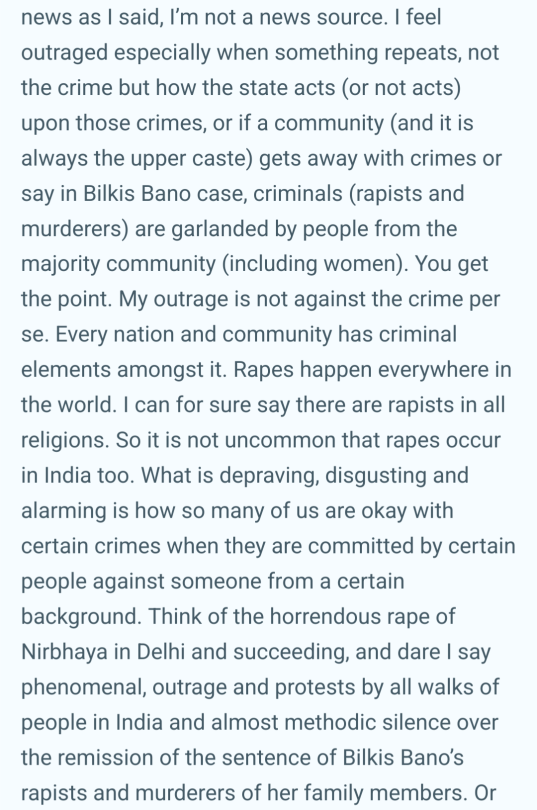

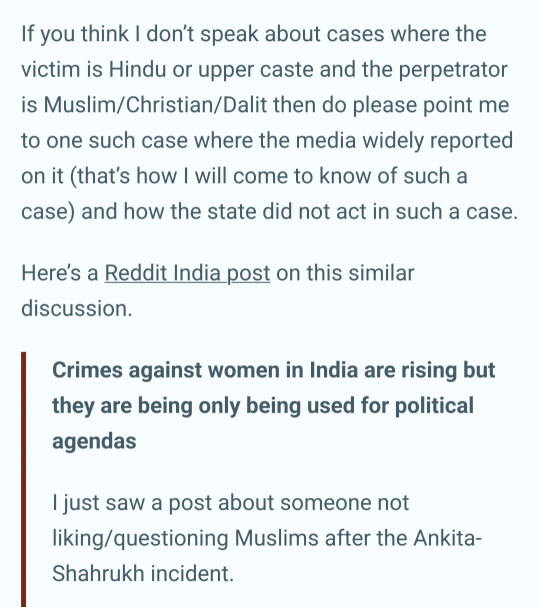
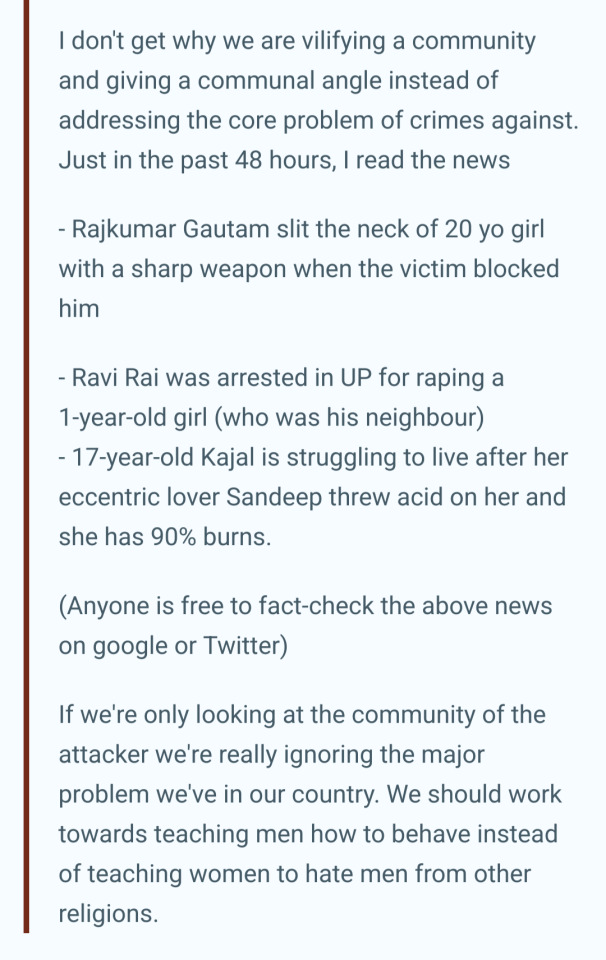
1 note
·
View note
Text
As Videos Of Alleged Violence Go Viral, Manipur Police's Appeal
GOnews2479

As videos of alleged violence in Manipur go viral, the state police have appealed to the public to refrain from sharing such content without verifying it. The police have also warned that those found spreading false information will be punished.
The videos that have been circulating online show clashes between protesters and security forces in Manipur. The protesters are demanding the release of political prisoners and the repeal of the Armed Forces (Special Powers) Act (AFSPA).
The police have said that they are investigating the videos and that action will be taken against those responsible for the violence. They have also urged the public to cooperate with the investigation.
The police appeal is important because it highlights the dangers of spreading false information online. When people share videos without verifying them, they can spread misinformation and incite violence. This can have serious consequences, especially in a sensitive situation like the one in Manipur.
for more content visit my website
GOnews2479
1 note
·
View note
Text
Manipur cops arrest fifth accused in women disrobing case
According to police, he was seen prominently directing the mob at B. Phainom village of Kangpokpi district in the video.

IMPHAL: Police have arrested the fifth accused in connection with the video that surfaced on July 19 showing two women being paraded naked by a mob in strife-torn Manipur, police said.
The accused has been identified as a 19-year-old, police said.
The four who were earlier nabbed for disrobing and parading two women in Manipur on May 4 were remanded to 11-day police custody on Friday, police said.
The arrests were made on Thursday, a day after the 26-second video surfaced on July 19.
The house of the key accused in the case was torched on Thursday, hours after he was arrested by police.
According to police, he was seen prominently directing the mob at B Phainom village of Kangpokpi district in the video.
One of the women seen in the video is the wife of an ex-army man who had served in the Indian Army as a Subedar of the Assam Regiment and even fought in the Kargil War.
It may be recalled, that the complaint in connection with the viral video was lodged around a month ago, June 21, at Saikul police station in Kangpokpi district.
The FIR filed in this case, a copy of which has been seen by PTI, revealed the tale of mayhem which occurred before the abduction and shameful behaviour with tribal women, a video of which has now formed the basis of raids and arrests of people connected with the incident.
The FIR claimed that one person was killed by the mob as he tried to protect his sister from being raped on May 4 before the two were paraded naked and molested in front of others.
More than 160 people have lost their lives, and several have been injured since ethnic violence broke out in the state on May 3, when a ‘Tribal Solidarity March’ was organised in the hill districts to protest against the Meitei community’s demand for Scheduled Tribe (ST) status.
Meiteis account for about 53 per cent of Manipur’s population and live mostly in the Imphal Valley, while tribals, which include Nagas and Kukis, constitute 40 per cent and reside mostly in the hill districts.
0 notes
Text
Christian Woman Gang-Raped and Paraded Naked in India: ‘The Police Were There with the Mob’
“Huge protests erupted in the conflicted Indian state of Manipur on Friday after a viral video showed two women from the Christian Kuki tribe being paraded naked and sexually assaulted by a howling mob of men.
The horrifying video has brought the steadily escalating Manipur crisis to the point of explosion and finally forced Indian Prime Minister Narendra Modi to speak about the…
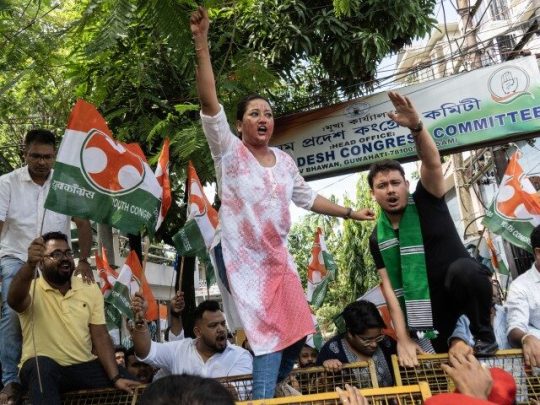
View On WordPress
0 notes
Text
House of man who paraded Manipur women naked set on fire
The house of the main accused, who paraded two women naked in Manipur, was burnt down by miscreants. The viral video showed two naked women from another community and sparked an outrage.

As the country seethes with anger over a video showing two women being paraded naked by a mob in Manipur, the house of the main accused, Huirem Herodas Meitei, was on Thursday burnt down by miscreants.
Visuals showed a group of people, mostly women, setting the man’s house on fire.
On Wednesday, a video emerged that showed women from one of the warring communities in Manipur’s Kangpokpi district being paraded naked by a mob from the other side. It soon went viral.
The incident, which happened in a village in Kangpokpi district, took place a day after ethnic violence erupted in the northeastern state on May 3. However, the horrific footage surfaced over two months later and became viral after the internet ban was lifted.
Taking note of the video, the Manipur Police had on Wednesday night registered a case of kidnapping, gang-rape and murder in Thoubal district against unidentified men.
Four people have been arrested in connection with the incident.
On Thursday, Chief Minister N Biren Singh said a thorough investigation was being conducted, adding that they would seek capital punishment if possible.
More than 150 people have been killed and several injured since ethnic violence broke out in Manipur on May 3, when a ‘Tribal Solidarity March’ was organised in the hill districts to protest against the Meitei community’s demand for Scheduled Tribe (ST) status.
Meiteis account for about 53 per cent of the state’s population and live mostly in the Imphal Valley, while tribals, which include Nagas and Kukis, constitute 40 per cent and reside mostly in the hill districts.
1 note
·
View note
Text
Manipur Violence: Police Response to Viral Video Incident
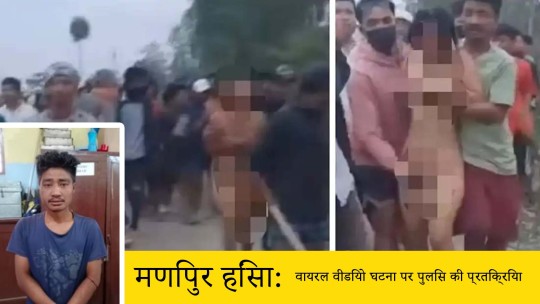
A shocking incident of sexual assault on two women in Manipur's Kangpokpi district on May 4 has raised serious questions about the police response time and handling of the case. The incident came to light when a viral video showing the women being paraded naked went viral on social media. In this article, we delve into the reasons behind the delayed police action and the subsequent arrests of the perpetrators.
Police's Delayed Action Explained
The FIR in connection with the sexual assault was not immediately transferred to the relevant police station due to the victims' absence from their homes and their initial complaint in another district. This delay raised concerns as the incident demanded urgent attention from law enforcement. Read More
0 notes
Text
Manipur state, India: Police raids follow shocking video of sexual assault in India's Manipur state amid ethnic violence
Editor’s Note: This report includes details of sexual assaults and violence.
CNN
—
A graphic video showing two women being paraded naked in the northeastern Indian state of Manipur has provoked widespread anger in the country and spurred several arrests after it emerged on social media on Wednesday.
The viral video depicts an incident from May 4, according to the Indigenous Tribal Leaders’…

View On WordPress
#arrests#asia#brand safety-nsf crime#brand safety-nsf death#brand safety-nsf mature#brand safety-nsf other#brand safety-nsf sensitive#brand safety-nsf violence#continents and regions#crime#crimes against persons#criminal law#criminal offenses#demographic groups#domestic alerts#domestic-business#domestic-international news#females (demographic group)#iab-computing#iab-crime#iab-internet#iab-law#iab-social networking#iab-technology & computing#India#international alerts#international-business#law and legal system#law enforcement#law enforcement and corrections
0 notes
Text
Viral Video of Sexual Assault in India Renews Attention on Manipur
The attack on two women in the state of Manipur led to the first public comments from Prime Minister Narendra Modi, however indirect, about the monthslong violence in the state.
source https://www.nytimes.com/2023/07/20/world/asia/india-manipur-video-woman.html
View On WordPress
0 notes
Text
Antonio Velardo shares: Video of Sexual Assault Goes Viral in India, Renewing Attention on Ethnic Conflict by Suhasini Raj
By Suhasini Raj
The attack on two women in the state of Manipur led to the first public comments from Prime Minister Narendra Modi, however indirect, about the monthslong violence in the state.
Published: July 20, 2023 at 04:14AM
from NYT World https://ift.tt/gcm4yOX
via IFTTT
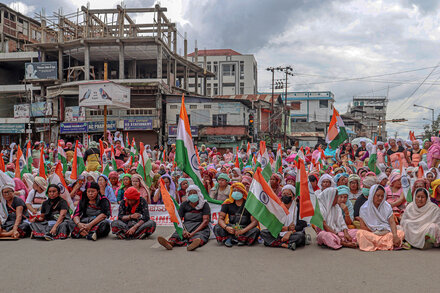
View On WordPress
0 notes